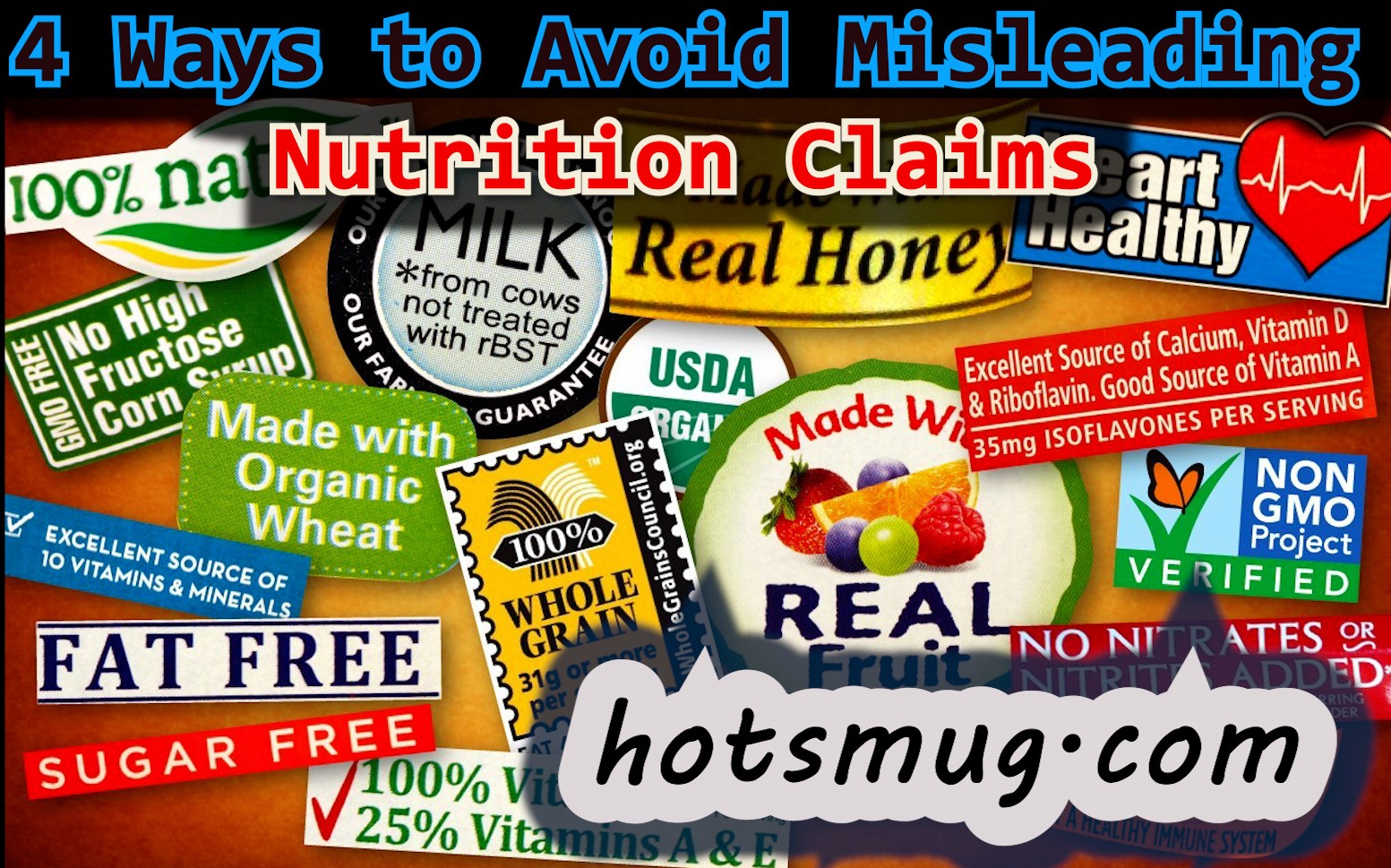Knowledge is the best protection against becoming a victim of false nutrition claims, aka quackery. How can you tell a real expert from a deceiver? Use these guidelines to help evaluate nutrition claims as legitimate or fraudulent.
01. Ignore health claims on food packages and in ads.
A few such claims, such as those related to sodium and high blood pressure, are officially approved by the FDA, but most aren’t. They fall under a loophole that allows companies to use sneaky language like “helps maintain healthy cholesterol levels” or “helps support a healthy immune system.” Because these phrases don’t explicitly say that the food prevents or treats disease—even though that’s what any normal person would infer—manufacturers don’t have to provide any evidence. What’s more, there are no strict definitions for frequently used terms such as all natural, low sugar, and made with whole grains or real fruit. Because it’s virtually impossible to distinguish between legitimate and misleading claims by manufacturers, the best approach is to disregard them all and get your information from the Nutrition Facts panel on the package.
Types of Nutrition Misinformation
Food Fads and Fad Diets are defined as unusual diets and eating patterns that promote short-term weight loss, with no concern for long-term weight maintenance or overall health. These diets are often trendy and may be popular for short periods of time. Food fads and fad diets have no scientific basis, and promote ideas that consuming (or not consuming) certain food items, vitamin and mineral supplements, and combinations of certain foods, will help one lose weight or prevent/cure a disease. Examples include the “grapefruit diet” or “low carb diet.”
Health Fraud is similar to food fads and fad diets, except that it is intentionally misleading, with the expectation that a profit will be gained. Health fraud includes products or diets that have no scientific basis, yet are still promoted for good health and well-being. Common examples include promises of “fast, quick, and easy weight loss,” or a “miracle, cure-all product.”
Misdirected Health Claims are misguided statements made by producers that lead consumers to believe a food is healthier than actually the case. Examples include foods that are low in fat or low in carbohydrates, yet still high in calories.
02. Study the Ingredients List
Product ingredients are listed by quantity — from highest to lowest amount.
This means that the first ingredient is what the manufacturer used the most of.
A good rule of thumb is to scan the first three ingredients, as they make up the largest part of what you’re eating.
If the first ingredients include refined grains, a type of sugar, or hydrogenated oils, you can assume that the product is unhealthy.
Instead, try choosing items that have whole foods listed as the first three ingredients.
In addition, an ingredients list that is longer than two to three lines suggests that the product is highly processed.
03. Ask the nutrition experts
A registered dietitian (RD) or a licensed dietitian (LD) has specialized degrees in dietetics, nutrition, public health, or related sciences from an accredited university.
Experts like Zell are trained to provide accurate, easily understood nutrition information. They can help us improve our nutrition I.Q. so we can be on the lookout for false quick-fix recommendations, so-called scientific breakthroughs and secret ingredients, and other misleading nutritional claims.
04. Don’t be influenced by just one study
When you encounter news reports about the latest study, don’t jump to conclusions based on that alone. Remember that it’s just one piece of a puzzle. What matters is the big picture—what scientists call the totality of the evidence. For a credible overview of the science, check out online sources such as the Nutrition Source from Harvard School of Public Health, or newsletters such as Nutrition Action Health letter, the Tufts Health & Nutrition Letter, and the Berkeley Wellness Letter.
Bonus Point
General rules for all nutrition and health claims
All nutrition and health claims must follow these general rules, as well as any claim-specific rules.
1. The claim (presence, reduced, etc) being made about the energy, nutrient (protein, carbohydrate, fat, fibre, sodium, vitamins and minerals) or other substance must have been shown to have a beneficial nutritional or psychological effect.
In other words, the substance must have been scientifically proven to be good for the body or the mind.
2. The substance for which the claim is being made is:
- present in a significant amount (see below) or, if no significant amount has been set, present in a large enough quantity for the person eating the food to get the benefit being claimed
- not present or present in a sufficiently reduced quantity for the person eating the food to get the benefit being claimed
3. The substance for which the claim is being made must be present in the food in a format that can be used by the body.
Therefore, if the substance goes straight through the body without being absorbed you can’t make the claim.
4. The amount of food that can reasonably be expected to be consumed provides a significant amount or, if no significant amount has been set, enough for the person eating the food to get the benefit being claimed.
5. The claim can only be made if the average consumer can be expected to understand it.
6. The claim must refer to the product once it is ready to eat in accordance with the manufacturer’s instructions. For example, you could not make a fat-free claim on a powdered drink if the instructions specify that it should be made with full fat or semi-skimmed milk.




